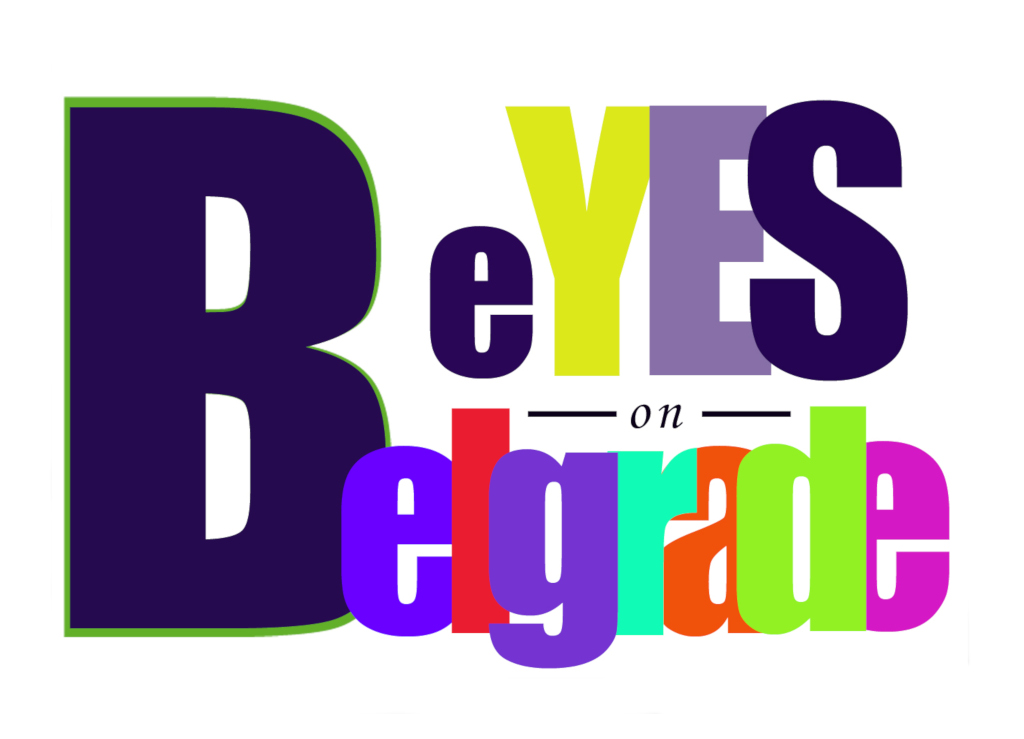Here we present to you some precious examples of Serbian traditional architecture that you can see in Belgrade.
St. Mark's Church
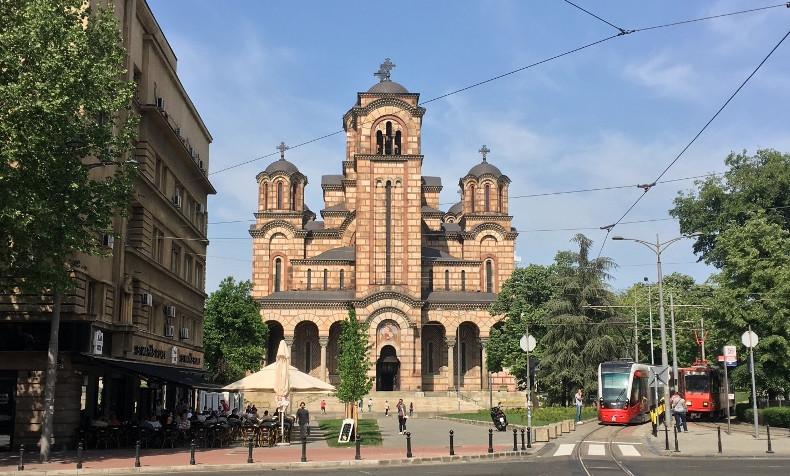
A monumental five-domed church, placed in Belgrade's central park - Tašmajdan, was being built from 1931 to 1939, in Serbo-Byzantine style of architecture, after monastery Gračanica in southern Serbia's Kosovo and Metohija region (built by Serbian king Milutin in 1321). (read more)

Manak's House
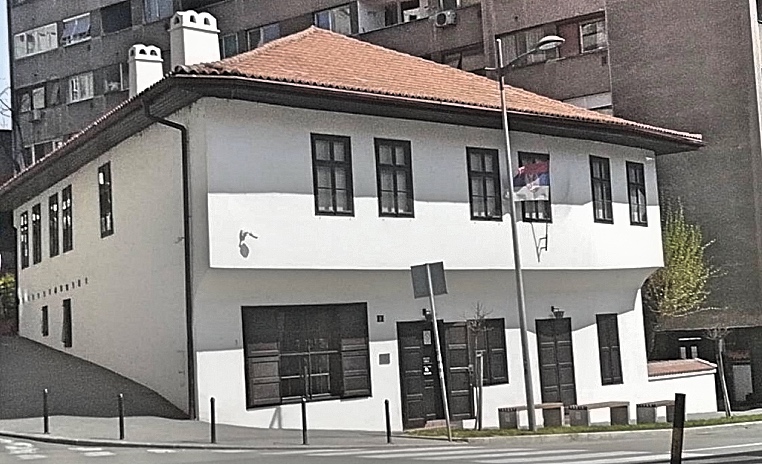
One of the oldest houses in Belgrade is Manak's house. It is located in Savamala historical district.It was built in 1830 in the spirit of Serbian traditional rural architecture. Now it forms part of the Museum of Ethnography. (read more)

Iguman's Palace
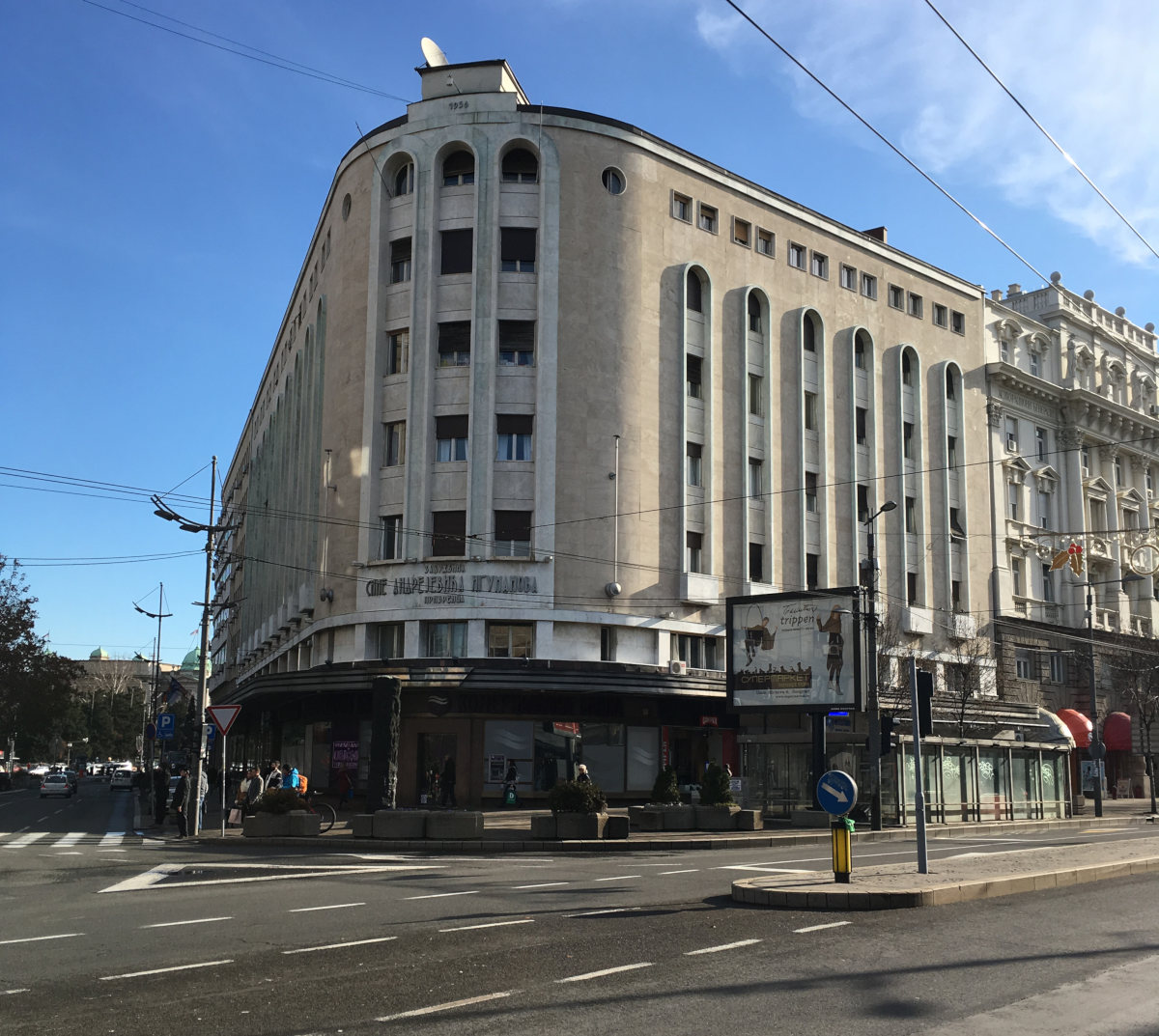
This palace, located in one of Belgrade's central squares - Terazije, was built in 1938 in a modernized Serbo-Byzantine fashion. (read more)
"Sokol" House
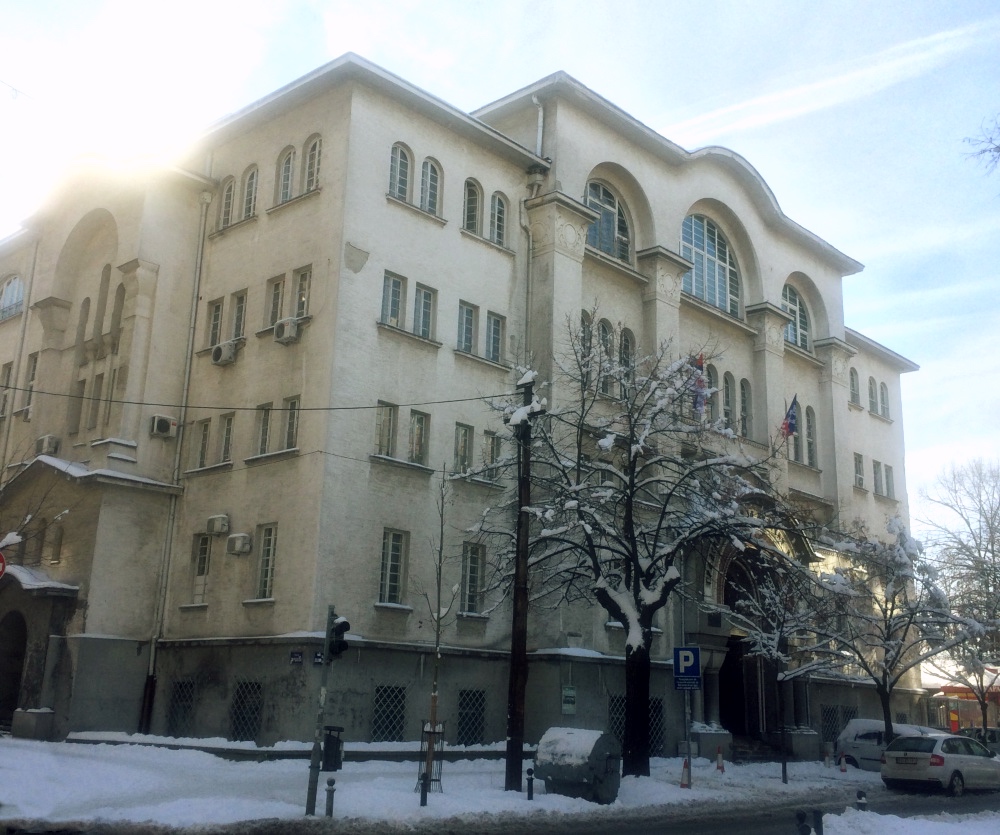
The house of "Sokol - Beograd Matica", Belgrade's main "Sokol" society (organization for physical education in the spirit of panslavism), is nowadays known as "Stari DIF", or "City Center for Physical Culture".
Year of construction: 1936
Architecture: Serbo-Byzantine style
Location: 27, Deligradska, Savski Venac district
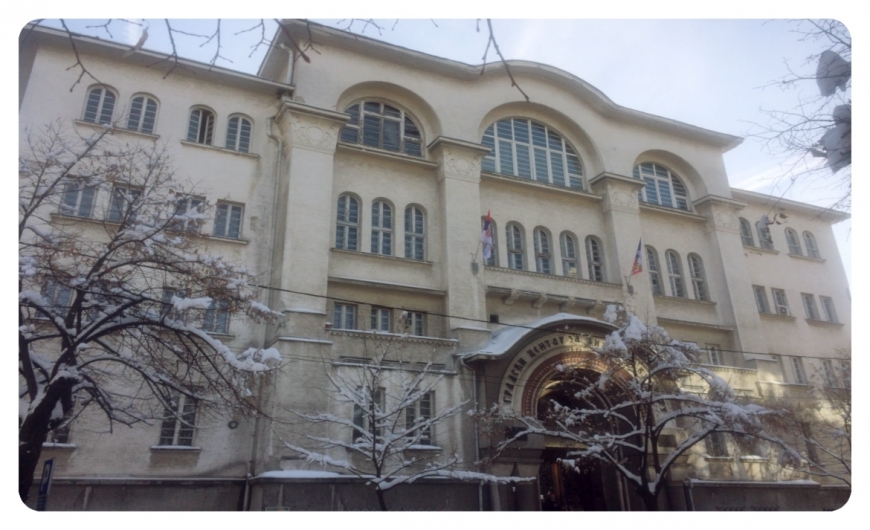
Many of the municipal sports organizations are located here, as well as fitness centers, sports medicine ambulance, indoor courts for football, basketball, handball and volleyball, and an indoor swimming pool. Outside, there are tennis and mini-football courts and the ice-rink during winter. The building has 7 entrances - the main one on the front side, and two at each of other 3 sides. The general idea was that the whole structure resembles to one of Sokol athletic excercises.
Old Telephone Co.
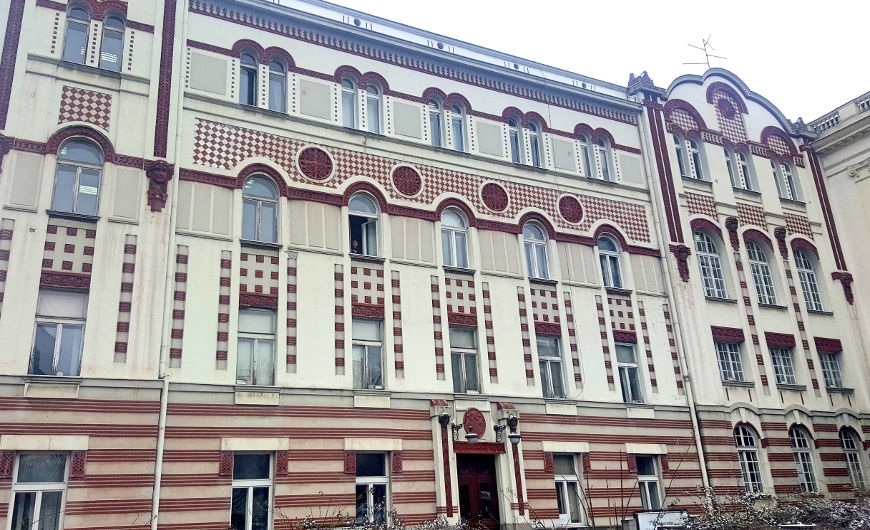
This edifice (the corner building) was constructed as the headquarters of Serbia's first Telephone co. It is still used by the "Telekom Srbija", which is the national telecommunications carrier.
Year of construction: 1908
Architecture: beautiful example of Serbo-Byzantine style of architecture with strong influence of Academism
Location: 47, Kosovska street (2, Palmotićeva street), Stari Grad district
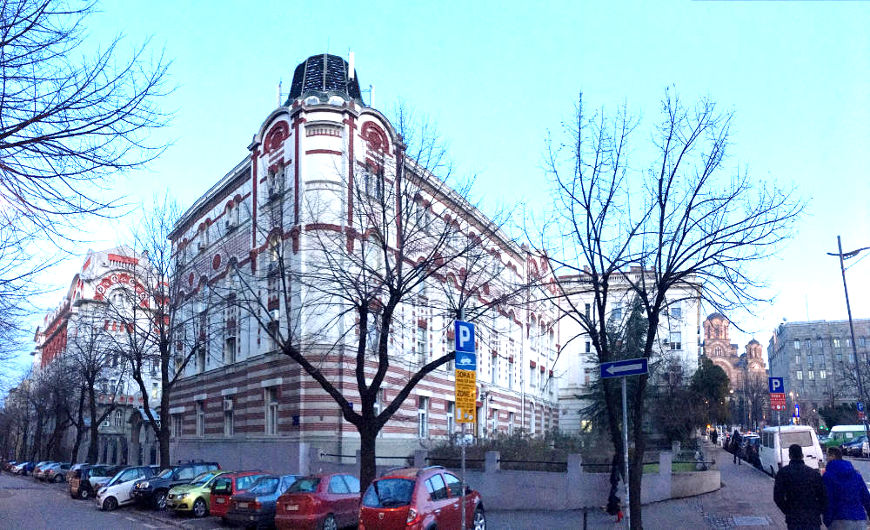
Despite that fact that it was designed in a traditional Serbian national style of architecture, on a photo of the entrance we can see two coats of arms with Serbian, Croatian and Slovene insignia. This part of the building (in Palmotićeva street) was added later, after the Great War (WWI) and creation of the Kingdom of Serbs, Croats and Slovenes, but it was constructed in the same manner, and with the same purpose, making a unified functional complex with the original structure. This crests were placed there to emphasize King Alexander's vision of the union of the South Slavs. It was pretty symbolic, because as it happened with the politics, this wasn't a very convenient solution.

House of Vuk's Fundation
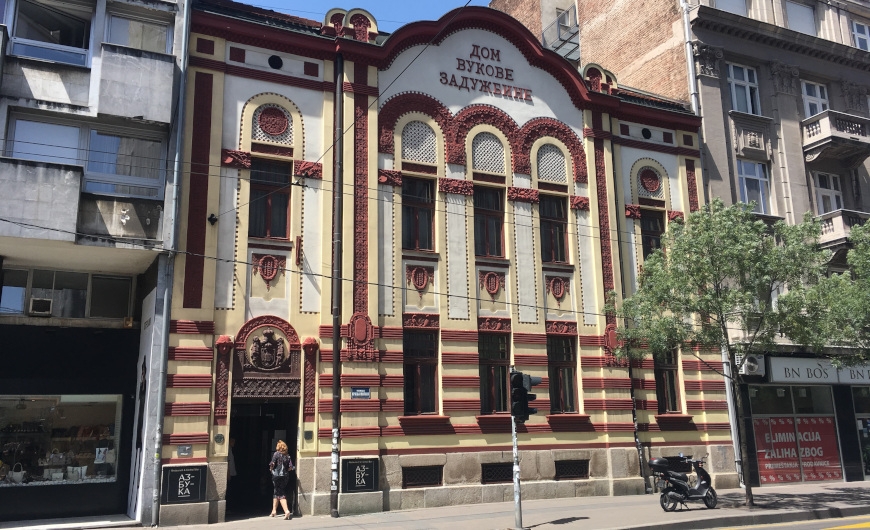
Dom Vukove zadužbine (eng. "House of Vuk's Foundation") was originally built in 1871 as the head office of the Ministry of Education of Kingdom of Serbia and later Kingdom of Yugoslavia. It was designed in the Serbo-Byzantine fashion.

Captain Miša's Edifice
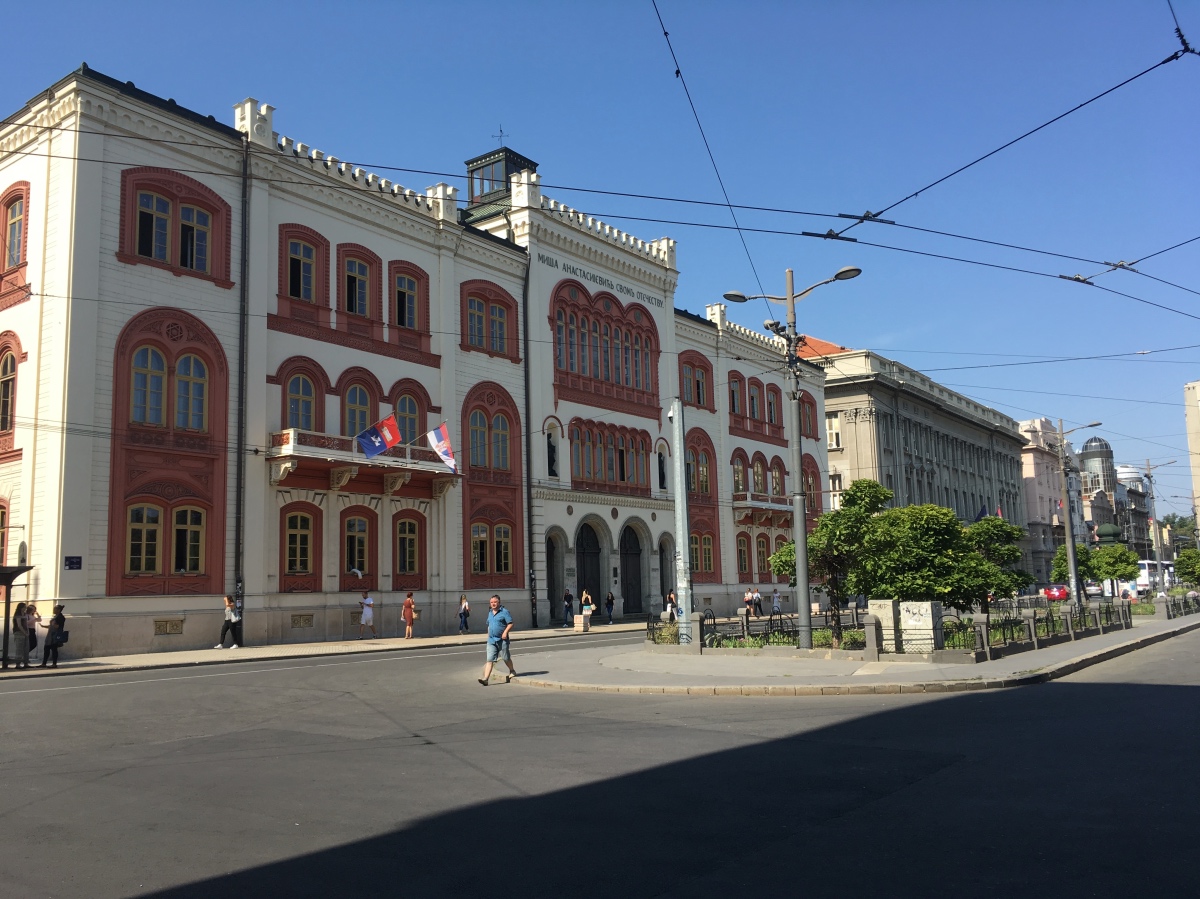
One of the oldest (built in 1863) and most representative buildings (designed in Serbo-Byzantine style with gothic and renaissance elements) in Belgrade is located at Students` square and hosts the University of Belgrade headquarters. (read more)

Old Commercial Academy
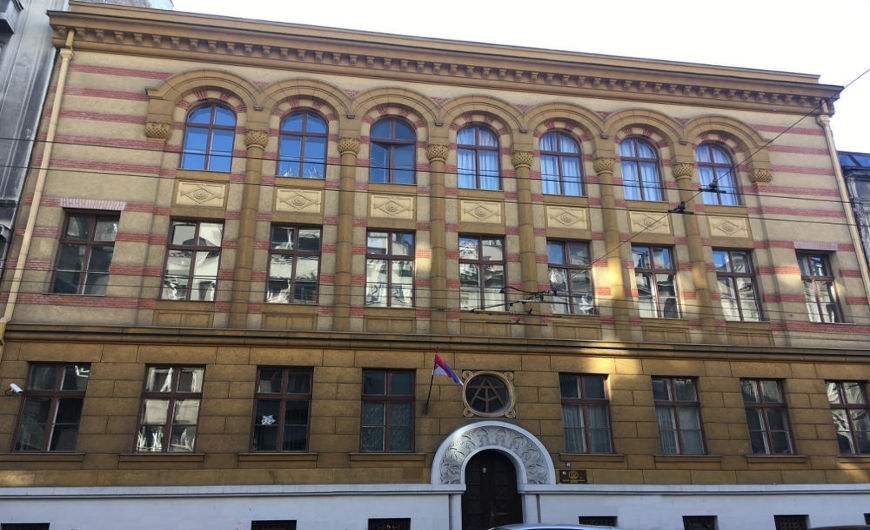
Originally constructed as the Commercial Academy in 1926, this building, designed in the Serbo-Byzantine architectural style, now houses the Law and Business high-school.

Patriarchate
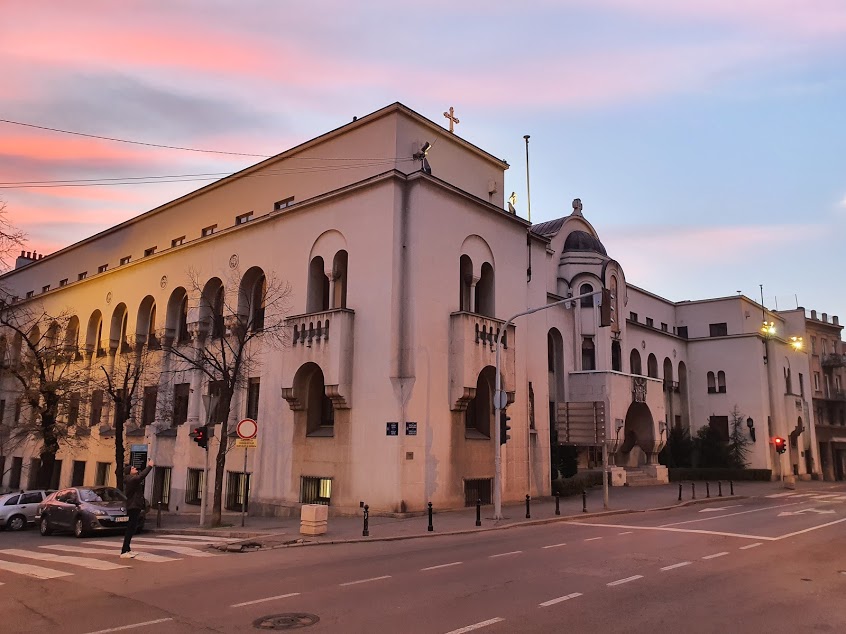
The building of the Serbian Patriarchate, which is the supreme body of the Serbian-Orthodox Curch, is a monumental structure positioned in possibly the most beautiful part of Belgrade, facing the Cathedral Church of St. Michael, in Kosančićev Venac neighborhood, close to Belgrade Fortress, next to Princess Ljubica Residence musem, and at the beginning of King Peter's street. The building was completed in 1935, in the Serbo-Byzantine architectural fashion. (read more)

Princess Ljubica's Residence museum
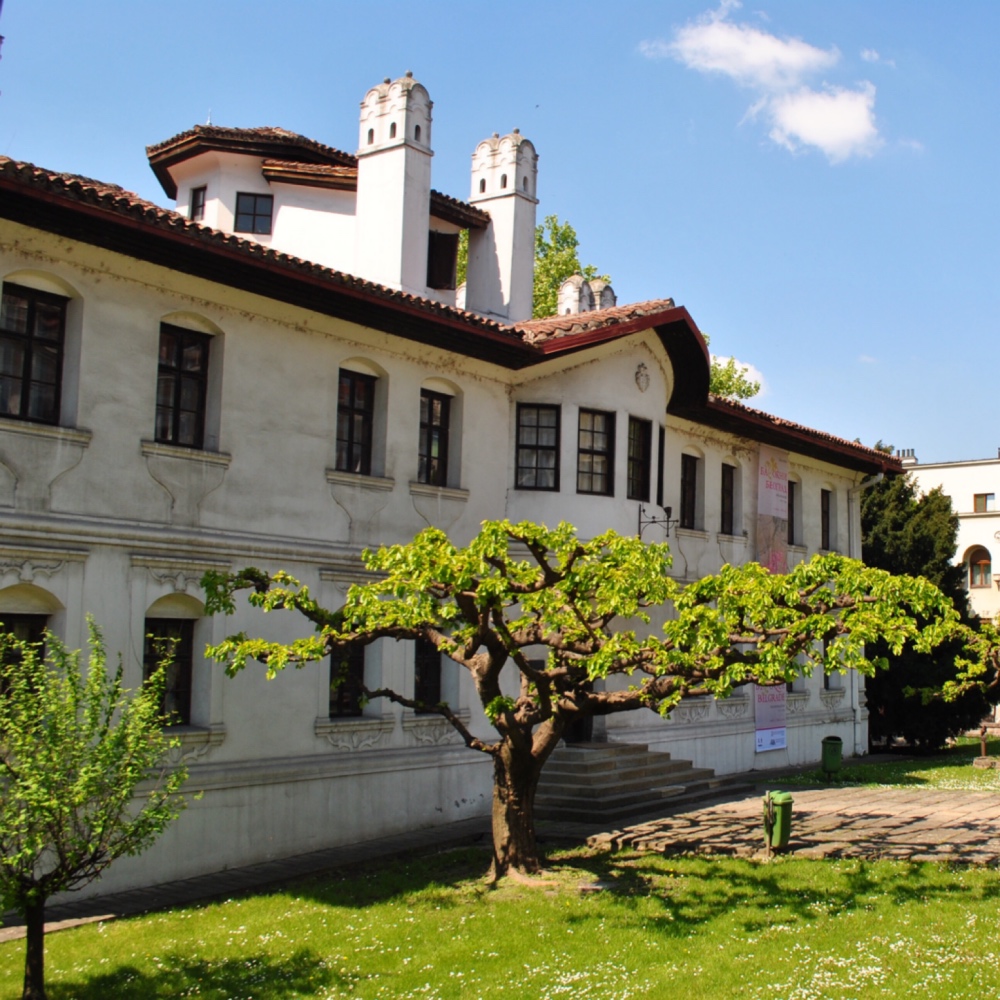
Konak Kneginje Ljubice (eng. "Princess Ljubica Residence") is a building of exceptional significance. Prince Miloš (ser. "Knez Miloš") built it for his family after proclamation of the Hatti-Sheriff in 1830, which granted Serbia's autonomy. It was designed in the fashion of Balkan profane architecture, which may be also called Oriental by some scholars.

Vaznesenjska Church
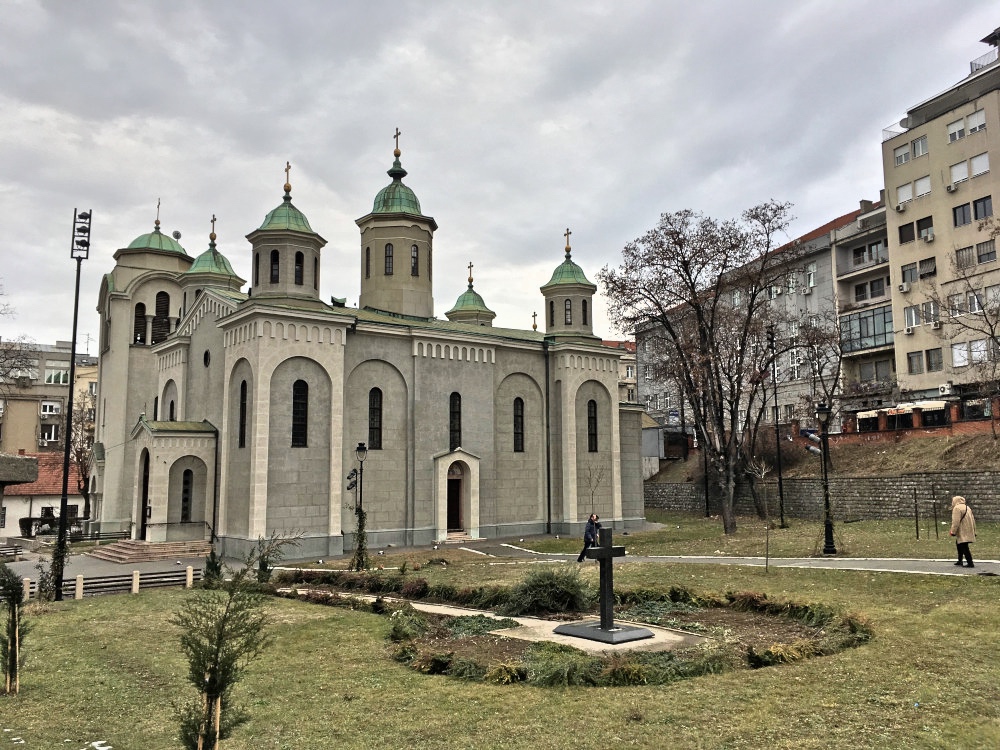
Vaznesenjska church ("Church of the Ascension") was built in 1862, during the reign of Prince Mihailo Obrenović. It is a five-domed church with detached bell tower. It was designed after Ravanica monastery (1377) in central Serbia (built in the style of Moravian school, the ultimate period of the Serbian medieval art), but modernized in the spirit of 19th century Romantisicm.

School of Electrical Engeneering "Nikola Tesla"
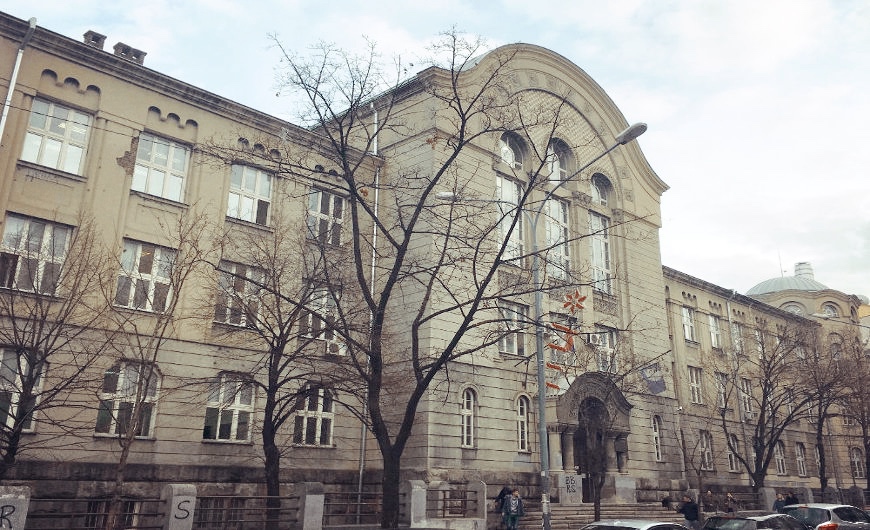
This building was constructed in 1929 for housing the Second Women's Gymnasium, but since 1956 the School of Electrotechnics "Nikola Tesla" is located in its premises. This is one of the monumental examples of Serbo-Byzantine style of architecture in Belgrade.

Home of High-School Students "Jelica Milovanović"
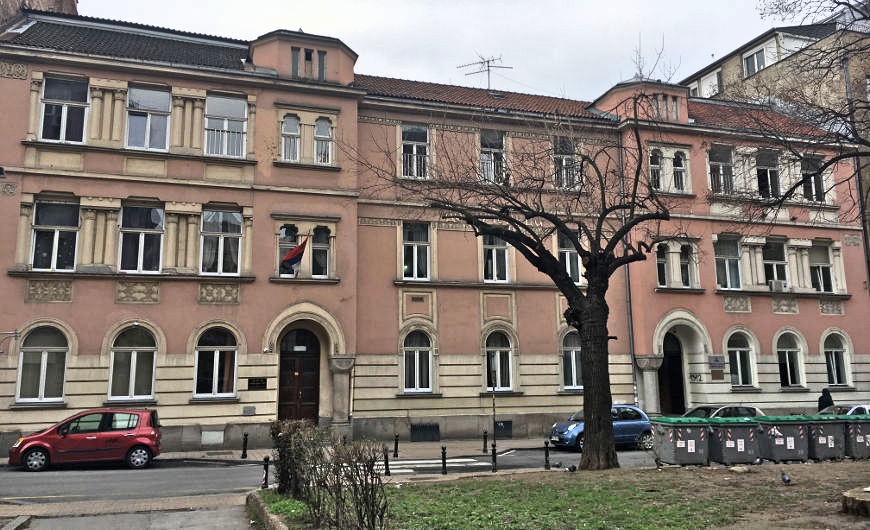
One of the very first buildings in Krunska street (eng. "Crown street"), at no. 8, is the so-called "Students' Home" (srb. "Dom učenika"), constructed in 1912. It represents a fine example of Serbo-Byzantine style of architecture, so it will immediately catch your eye.

Konstantinović House
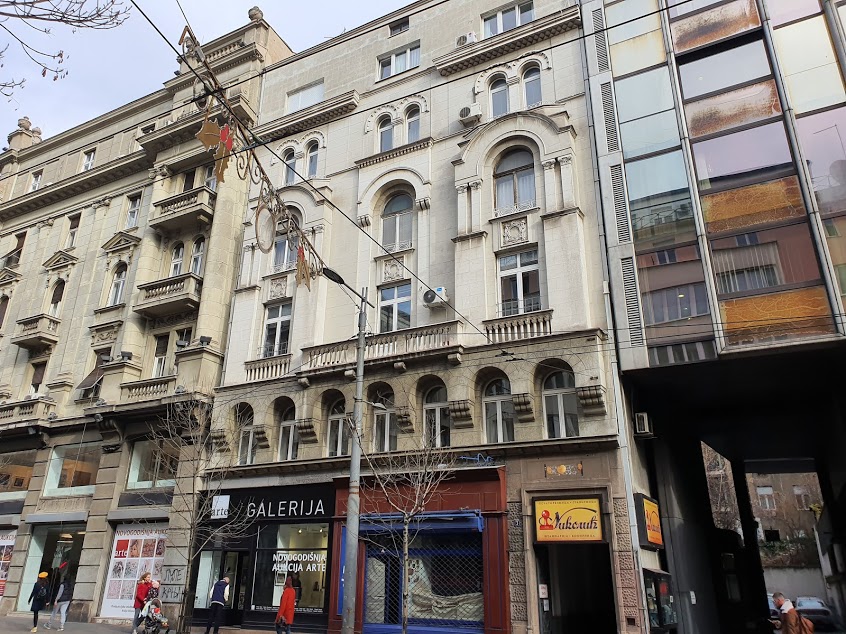
This building was constructed in 1927 and it is located in Kralja Milana (eng. "King Milan") street, close to Andrićev Venac and the New Palace (now Presidential Palace). The upper floors are designed in the Serbo-Byzantine style of architecture.

House of Nikolić Brothers
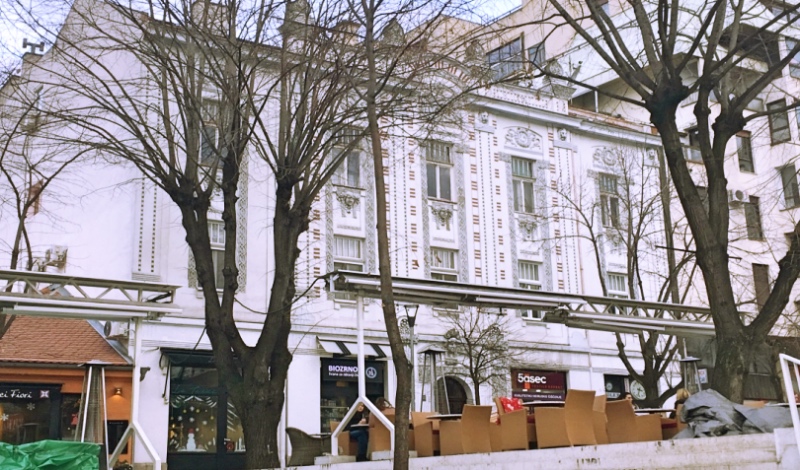
This wonderful building from 1914 is located on the Flower square (ser. "Cvetni Trg") and it represents one of the most interesting applications of the Serbo-Byzantine style of architecture mixed with elements of Secession on the facade.

Monastery Vavedenje
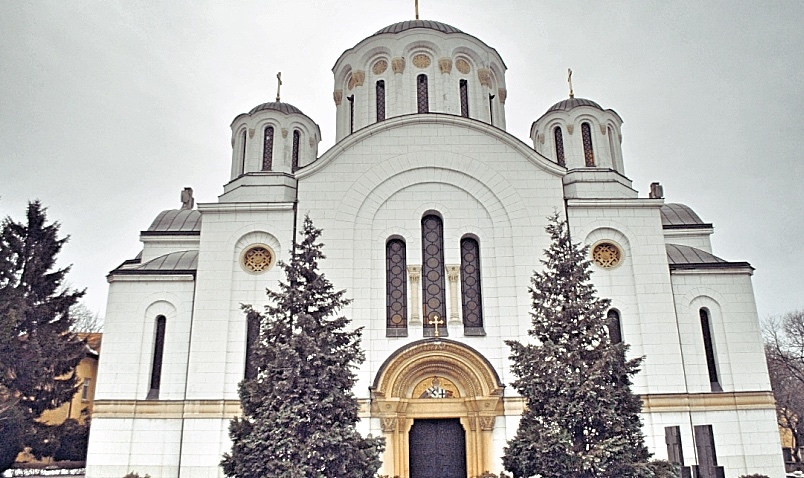
The Serbian-Orthodox Monastery "Vavedenje Presvete Bogorodice" (eng. "Presentation of Holy Virgin Mary") is the only complex of such kind in Belgrade urban area. The complex was built in 1936. Inspiration for this project was drawn from the national style of the old Serbian medieval monasteries. (read more)

Kafana "?"
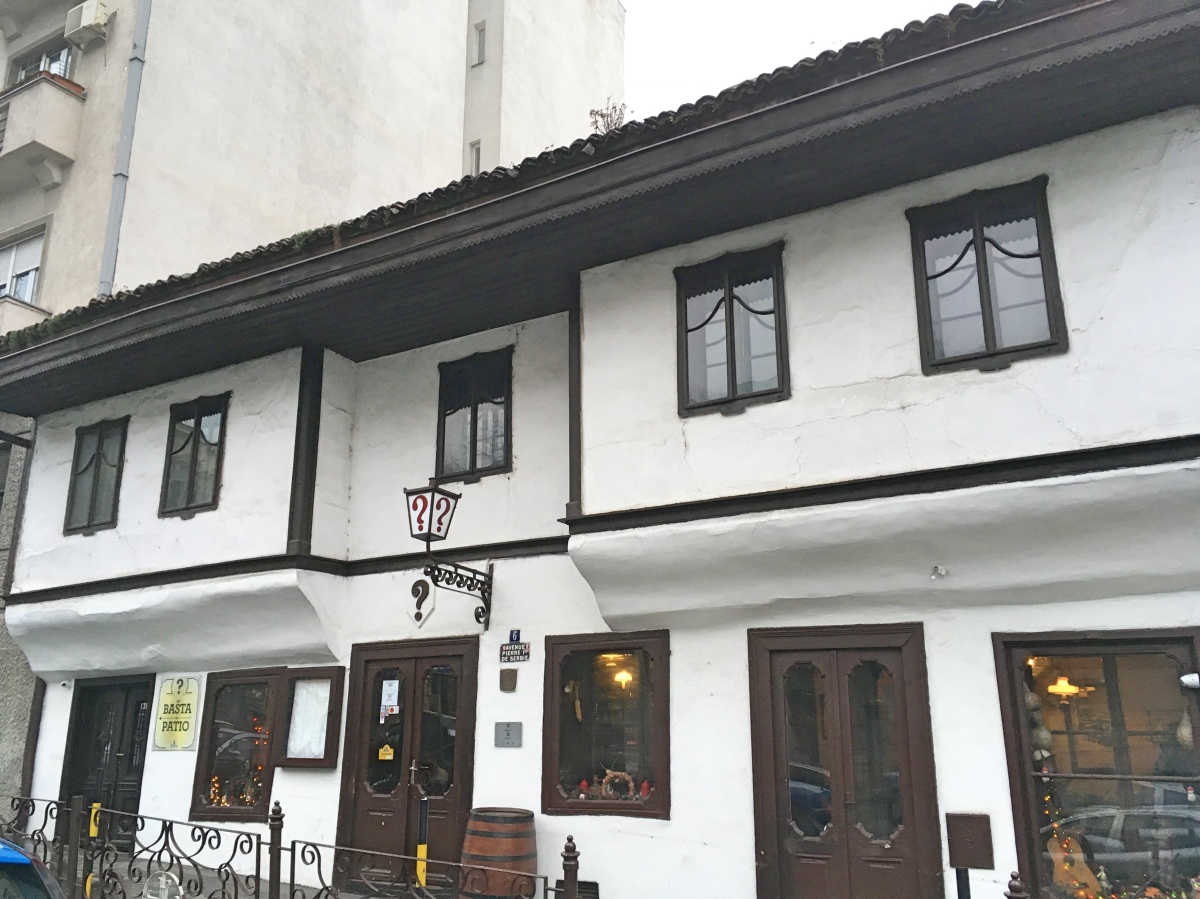
The oldest tavern in Belgrade, and one of the oldest edifices (constructed in 1823) is located in a wonderful surroundings of the Cathedral Church of St. Michael, the building of the Patriarchate, Princess Ljubica Residence museum and King Peter's street. It represents one of few examples left in the city of Balkan profane architecture.

Church of Alexander Nevsky
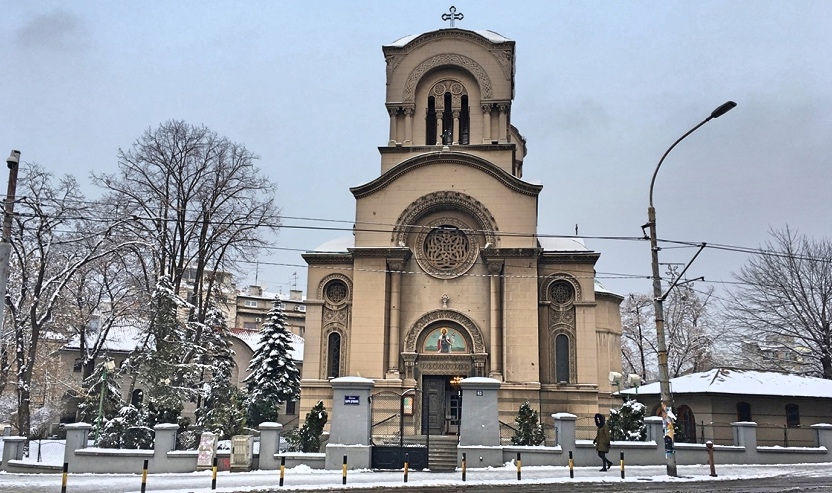
Church of St. Alexander Nevsky was being built between 1912 and 1929. The construction was interrupted because of the Great War (WWI). It was designed in the style of Moravian school, the ultimate period of the Serbian medieval art, like Vaznesenjska church. It is richly decorated inside, so it is definitely worthwhile seeing. (read more)

Vuk Karadžić and Dositej Obradović Museum
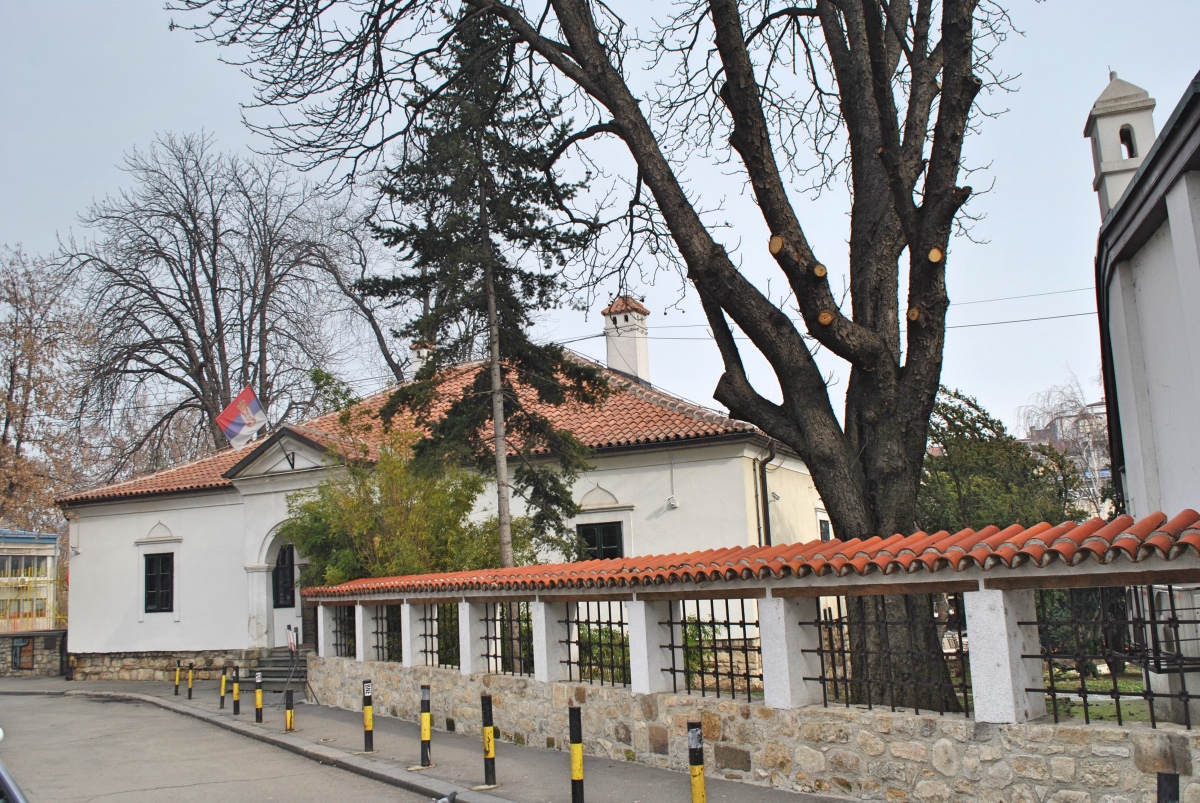
This self-standing one story building houses the precious collection of belongings and documents of two greatest Serbian reformists, Vuk Karadžić (considered as the father of Serbian language) and Dositej Obradović (enlightener and first Minister of Education). It was constructed between 1739 and 1789 in the spirit of Balkan profane architecture.
Building at 10, Krunska street
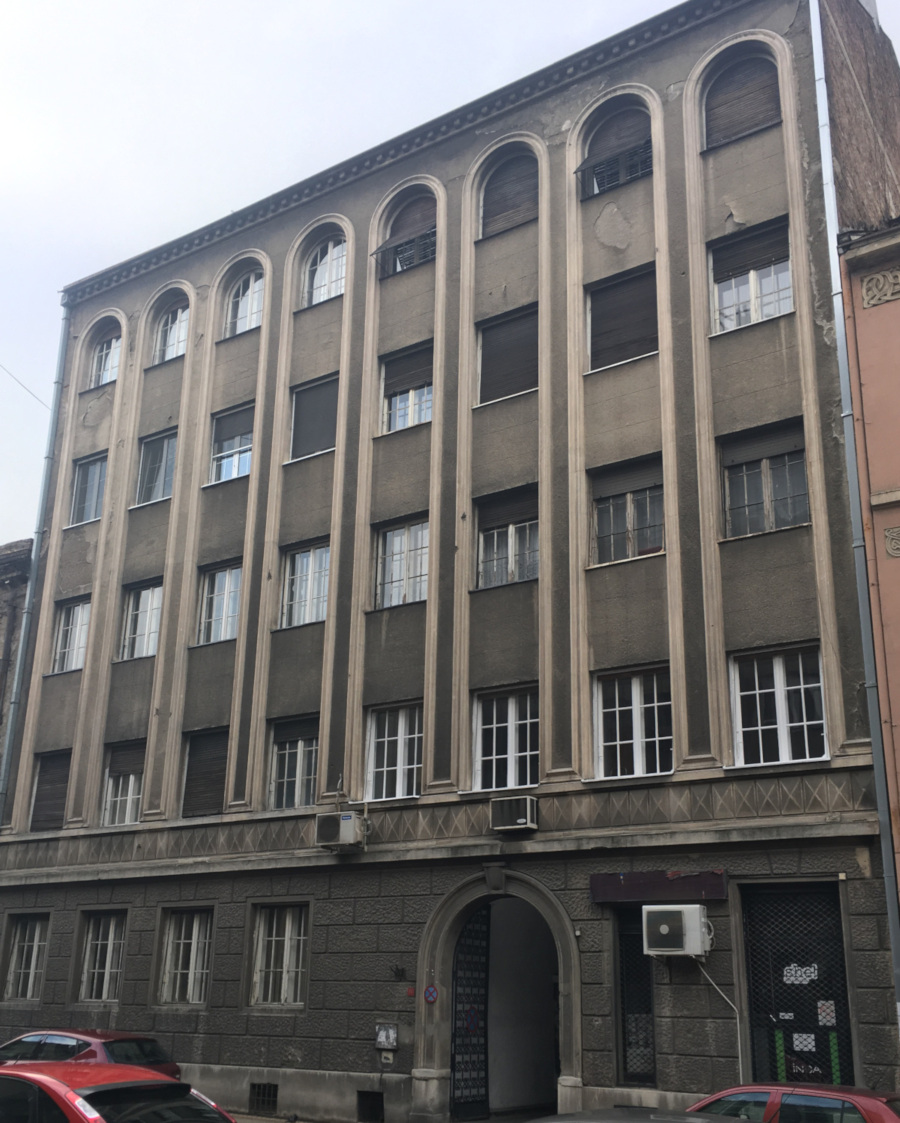
Next to the students' home in Krunska street there is yet another example of Serbo-Byzantine architecture, but this time in its modern version, similar to the case of Iguman's Palace at Terazije.
 English (United Kingdom)
English (United Kingdom)  Srpski latinica (Srbija)
Srpski latinica (Srbija) 